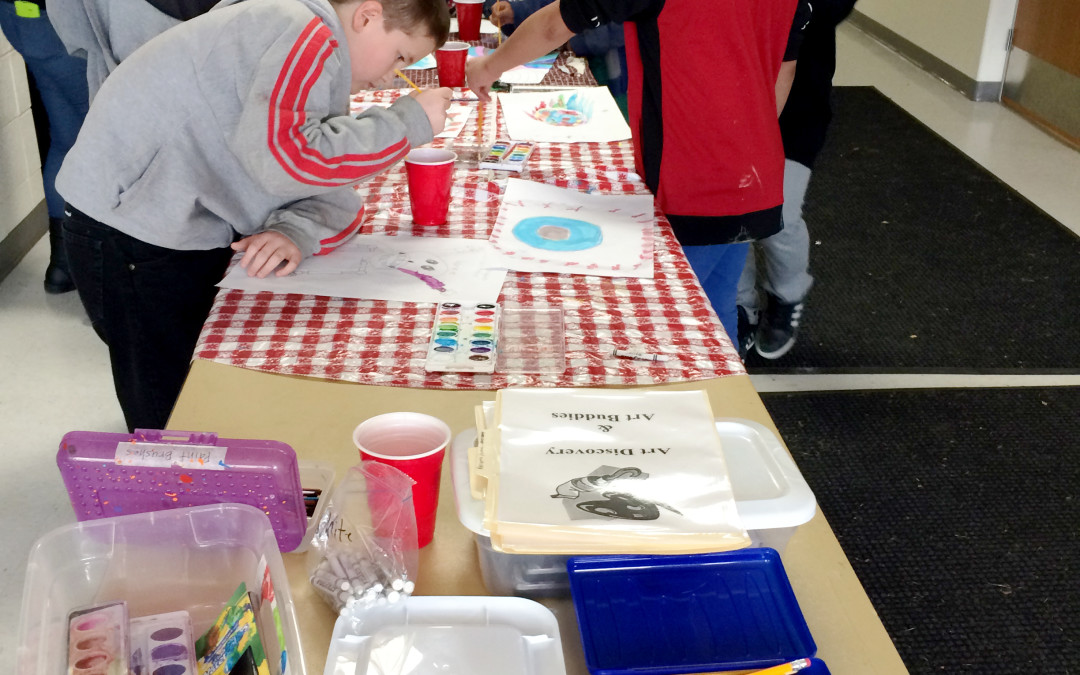I learned how to play the piano when I was 5 years old, which is about the same age that I started singing. In middle school I started playing the cello and performing in plays. Throughout high school I was actively involved in choir, orchestra, and theatre, making room in my schedule so that half of my senior year courses were different fine arts.
I’d heard that there were benefits for students who participated in the arts, but no one cited data to back up those claims. A few years ago I was in a writing course at BYU; for my final paper I chose to write about benefits of the arts, specifically theater programs, for at-risk youth. This was years before I knew I’d be working at the Boys & Girls Clubs, and this was my first exposure to learning about nonprofit programs that make an impact in these fields.
At the Boys & Girls Clubs of Utah County, our mission is to inspire and enable all young people, especially those who need us most, to reach their full potential as productive, caring, and responsible citizens and leaders. We accomplish this mission by providing programs with a focus on improving academic engagement, building character, and improving healthy behaviors. One of the great things happening at many of our program sites is the opportunity for the youth in these programs to be involved in the arts in a variety of ways.
The National Endowment for the Arts commissioned a report comparing longitudinal studies on the benefits of arts involvement for young people. That report, The Arts and Achievement in At-Risk Youth: Findings from Four Longitudinal Studies, is one of the most cited articles in the current discussion surrounding these issues.
The findings are clear, there is a strong correlation between being highly involved in the arts, academic success, and civic engagement. In fact, when following a number of 8th graders through their schooling until they were 26 they found that the 71 percent of the youth from low socioeconomic backgrounds who were highly involved in the arts attended college after high school. 24 percent of these young people went on to receive an associate’s degree, 18 percent got a bachelor’s, and 1 percent got a graduate or professional degree.
Of these underprivileged youth, 22 percent of those with low arts involvement didn’t graduate from high school. Contrast that with only four percent of those with high arts involvement that didn’t graduate. The correlation is there. Students who are involved in the arts are more likely to succeed in school, graduate high school, attend and graduate from college. These aren’t the only benefits found in this research, though.
Consider the percentages of young people who volunteered in the two years after high school. 26 percent of those youth from a low socioeconomic background with low arts involvement volunteered in the community, and 47 percent of those with high arts involvement volunteered. 28 percent of the youth with high arts involvement went on to volunteer at least once a month.
Of this same group, they lead the number of youth in the study who had registered to vote, who had voted in a local election, and who had voted in the last national election.
Ultimately the study came to three main conclusions. First, that those socially and economically underprivileged youth with high levels of engagement in the arts show more positive outcomes in several areas than their peers with low arts involvement.
In middle school, high school, and beyond, they tend to do better on a host of academic and civic behavioral measures than do at-risk youth who lack deep arts backgrounds. To varying degrees, those outcomes extend to school grades, test scores, honors society membership, high school graduation, college enrollment and achievement, volunteering, and engagement in school or local politics.
Second, these underprivileged youth with a history of extensive arts experiences show average or above average achievement levels.
These findings suggest that in-school or extracurricular programs offering deep arts involvement may help to narrow the gap in achievement levels among youth of high-versus low-SES.
Third, while positive relationships between arts and civic engagement are noted for students of high socioeconomic status, the majority of the positive outcomes noted between arts involvement and academics apply only to at-risk populations.
Even youth from socially and economically advantaged backgrounds may find access to greater civic and social participation via deep arts involvement.
Most of the program sites operated through the Boys & Girls Clubs of Utah County offer opportunities for our Club members to be involved in the arts. Through theater, band, orchestra, art, filmmaking, reader’s theater, and other activities we help them gain the experience that can start them towards great futures, made more possible through the arts.
At all of our program sites, we appreciate volunteers who provide support for these programs. Utah County is an area rich with support for the arts and talented individuals! You can make a difference for these Club members. Volunteer today! Follow this link to our volunteer application, and come support great futures and the arts!

